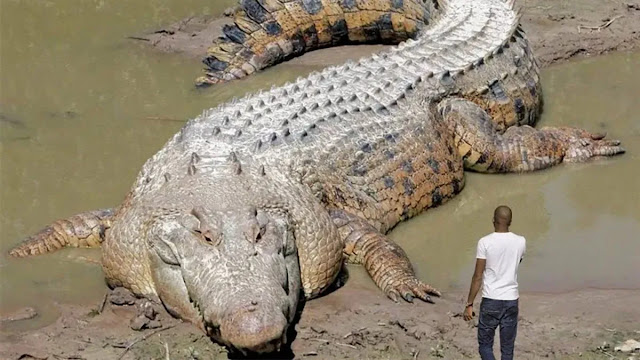In the watery landscapes of our planet, few creatures command as much respect and fascination as the crocodile. With their prehistoric lineage and powerful presence, crocodiles symbolize both the awe-inspiring beauty and the primal danger of the natural world. In this article, we delve into the intriguing world of crocodiles, exploring their biology, behavior, and ecological significance.
A Glimpse into Crocodilian Evolution: Crocodiles belong to the order Crocodylia, a group of reptiles that traces its ancestry back over 200 million years. These ancient creatures have survived multiple mass extinctions, evolving into the formidable predators we recognize today. Their closest living relatives are birds and dinosaurs, making crocodiles a fascinating link to the distant past of terrestrial life.
Species Diversity: While often lumped together under the common term "crocodile," these reptiles comprise several distinct species, each adapted to different habitats and environments. The three primary groups within the Crocodylia order are the true crocodiles (Crocodylidae), alligators and caimans (Alligatoridae), and gharials (Gavialidae). From the iconic Nile crocodile to the elusive Indian gharial, each species possesses unique characteristics that contribute to its survival in its respective ecosystem.
Anatomy and Adaptations: Crocodiles are marvels of evolutionary adaptation, perfectly suited to their semi-aquatic lifestyles. Their streamlined bodies, armored scales, and powerful tails allow them to move swiftly through water while remaining well-protected from potential threats. Furthermore, their formidable jaws, filled with razor-sharp teeth, make them apex predators capable of taking down prey much larger than themselves. Crocodiles also possess remarkable sensory capabilities, with specialized organs that enable them to detect vibrations and changes in water pressure, making them highly effective hunters.
Ecological Role: As apex predators, crocodiles play a crucial role in maintaining the balance of their ecosystems. By regulating populations of prey species, they prevent overgrazing and help ensure the health of aquatic habitats. Additionally, crocodile nesting sites provide essential nutrients to surrounding vegetation, influencing the dynamics of riparian ecosystems. Despite their fearsome reputation, crocodiles are integral components of their habitats, contributing to biodiversity and ecosystem resilience.
Conservation Challenges: Despite their ecological importance, crocodiles face numerous threats to their survival, primarily due to human activities. Habitat loss, pollution, poaching, and retaliatory killings pose significant challenges to crocodile populations worldwide. Several species are listed as endangered or critically endangered on the IUCN Red List, highlighting the urgent need for conservation efforts to protect these ancient predators and their habitats.
In the tapestry of life on Earth, crocodiles stand as enduring symbols of resilience and adaptation. From their ancient origins to their vital roles in modern ecosystems, these reptiles inspire both awe and reverence. As stewards of our planet, it is imperative that we work tirelessly to ensure the continued survival of these magnificent creatures, preserving not only their species but also the intricate web of life they support.

